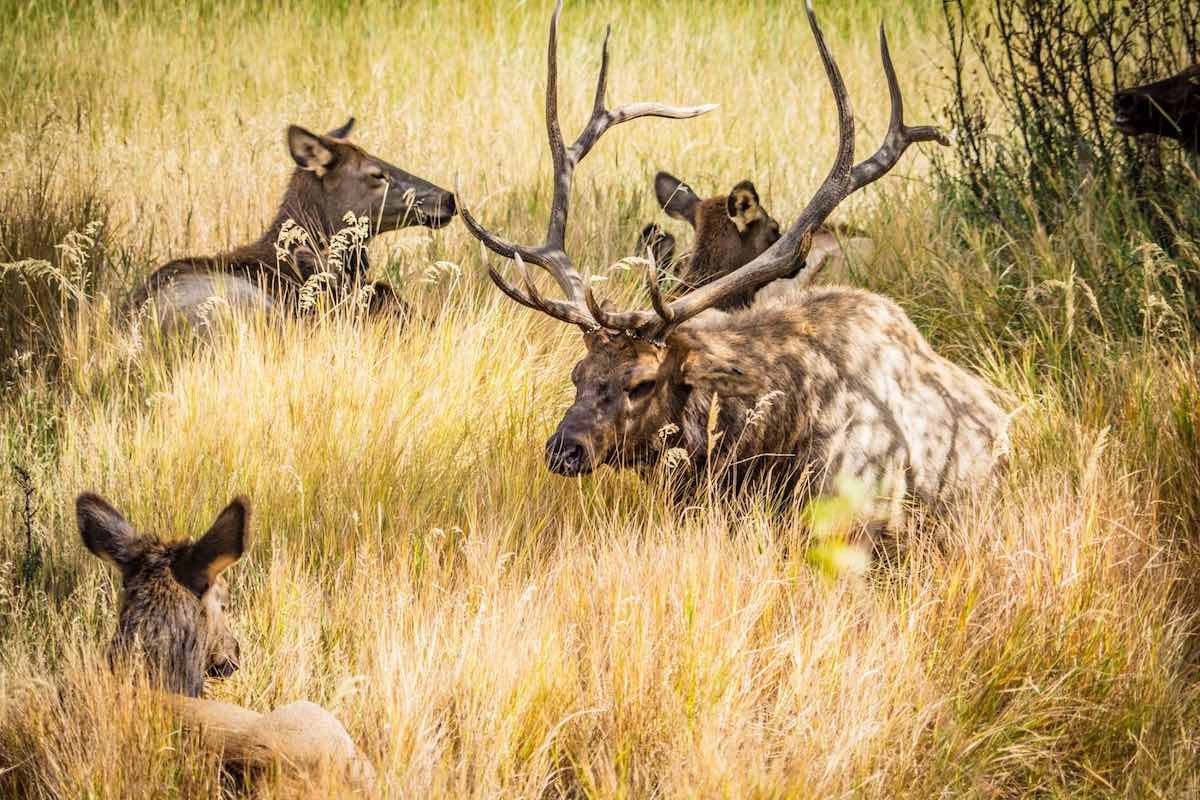What’s the Difference Between a Moose, an Elk, and a Deer?
If you’ve ever driven through Grand Lake or Rocky Mountain National Park, chances are you’ve spotted a massive moose near the water’s edge or a herd of elk crossing the meadow. At a quick glance, they can all look similar — but look closer, and you’ll see clear differences in size, antlers, and behavior. This Colorado wildlife guide breaks down how to tell moose, elk, and deer apart — plus where you’re most likely to see them near the Rockies.
1. Size and Build:
Elk
Moose: The moose is the largest of the three and can stand over 6 feet tall at the shoulder. They can weigh anywhere from 800 to 1,500 pounds. Their sheer size is often the first giveaway. They have a robust and muscular build with a pronounced hump on their shoulders.
Elk: Elks are smaller than moose but larger than most deer species. They typically stand 4 to 5 feet tall at the shoulder and can weigh between 500 to 700 pounds. They have a more streamlined body compared to the moose.
Deer: Deer are the smallest of the trio. Depending on the species, they can weigh between 70 to 300 pounds. Their build is slender and graceful.
2. Antlers:
Moose: Moose have broad, flat, and palmate (shovel-shaped) antlers. The antlers can spread 4 to 6 feet across.
Elk: Elk antlers are more elaborate and branched, often with a "royal" point—a long tine coming off the back of the main beam. They can be quite large, sometimes reaching lengths of 4 feet.
Deer: Deer antlers are smaller and can vary in shape depending on the species. They are typically branched and can have multiple tines.
Deer
Moose
3. Facial Features:
Moose: Moose have a long, bulbous nose and a "bell" or "dewlap"—a flap of skin and hair—hanging beneath their throat.
Elk: Elks have a more refined face with a tan muzzle and a white rump patch.
Deer: Deer have a delicate face with big eyes and a white tail that they often flash as a warning sign to other deer.
4. Habitat and Behavior:
Moose: Prefer colder climates and are often found in the northern parts of North America and Europe. They are solitary animals and are usually seen alone.
Elk: They are herd animals and can often be seen in groups. They prefer forested areas and open meadows.
Deer: Deer are adaptable and can be found in a variety of habitats, from forests to grasslands to urban areas. They are also herd animals but can be seen alone or in smaller groups.
5. Sounds:
Moose: Emit a low grunting sound.
Elk: Known for their bugling calls, especially during the mating season.
Deer: Make a variety of sounds, including bleats, grunts, and, in the case of white-tailed deer, a loud alarm snort.
Size and Build
Moose
Largest of the three — over 6 feet at the shoulder, weighing 800–1,500 lbs.
Broad shoulders and a noticeable hump.
Elk
4–5 feet tall and 500–700 lbs.
More streamlined build, less hump.
Deer
The smallest: 70–300 lbs.
Graceful and slender, built for speed.
FAQs
Can you see moose in Grand Lake?
Yes. Moose are frequently spotted around Shadow Mountain Lake, Trail Ridge Road, and the Colorado River Headwaters area.
What’s the best season for elk viewing in Colorado?
Fall (September–October) during the rut, when males are bugling and herding females.
Do deer live year-round in Grand County?
Yes. Mule deer are common year-round; white-tailed deer are less frequent at high elevations.
Conclusion:
While moose, elk, and deer might share the same habitats and have some overlapping features, they are distinct animals with unique characteristics. By paying attention to their size, antler shape, facial features, and behavior, you can easily tell them apart. So, the next time you're out in nature or watching a wildlife show, you'll be able to impress your friends and family with your newfound knowledge!



